Results 1,441 to 1,450 of 12096
Thread: Anandtech News
-
01-11-12, 07:20 PM #1441
Re: Anandtech: Crucial 50GB Adrenaline SSD Cache, Available in Q1
"A well regulated Militia, being necessary to the security of a free State, the right of the people to keep and bear Arms shall not be infringed."
The Second Amendment to the United States Constitution
-
01-11-12, 10:50 PM #1442
Anandtech: CES: Seagate Combines 500GB Portable Drive With Mobile Hotspot in Proof of
While perusing the Verizon Wireless booth, a chunky little device caught our eye. Though considered a proof of concept, and not scheduled for release yet, a Seagate device was on display that combined an LTE mobile hotspot with 500GB of storage on-board. CES itself presents a clear use case for a device like this, allowing media generated by coverage of an event to be transferred to the device for easy access and collaboration by a reporting team. Sadly, Seagate and Verizon don't make market decisions based entirely on our whims. The more obvious use case is the traveler that carries a hotspot and external storage now, and would be able to downsize to a single device.
One thing is certain, the device would be chunkier than hotspots and external storage solutions are today. The burden on the battery from operating WiFi and LTE radios, as well as a spinning mechanical disk might also limit the value of this device. We will touchbase with Seagate and keep an eye on this product to see if it ever shows up in the wild.
More...
-
01-11-12, 11:40 PM #1443
Anandtech: Sneak Peek at Future Toshiba Tablets
Ahead of CES, Toshiba revealed their Thrive successor, the Excite X10. This 7.7 mm thick slate would feature a 10.1" 1280x800 Gorilla Glass display and run Android 3.2 (and later 4.0) on a 1.2 GHz TI OMAP 4430 SoC with 1 GB of RAM. We didn't have a chance today to spend some time handling the device but we did see it and some of its kin locked behind glas on the show floor, and all four merit some mention.
Sporting a unique frame, the smallest of the bunch was a 5.1" tablet with a 21:9 aspect ratio. Meant as a purely media consumption device the product is a response to the prevalence of premium film and television content available in this ratio. The displayed sample is meant to gauge interest more than indicate a production direction, so if this really appeals to you, don't get your hopes up.
Slotting in between the 5.1" concept and the 10.1" Excite X10 is an unnamed tablet featuring a gorgeous 7.7" AMOLED display. Colors were bright and vibrant, while viewing angles were excellent. No comment was made regarding the display manufacturer, though with LG stepping out of the small AMOLED market the list of possible vendors is limited.
We will try and spend some time with the Excite X10 before the show ends, but in the meanwhile we spent some time ogling a tablet we never expected to see but could learn to love. At 13.3" the concept is meant to further fill the space between a tablet and a traditional PC, per Toshiba reps. If placed in production the device would feature a full line of accessories including a docking stand and a keyboard and mouse to provide input options that would help fill the role of the PC. Aiding in this desktop like experience would be a Tegra 3 SoC and a display that would most likely hit 1920x1080. Though quite large the slate was still impressively thin, measuring roughly 10 mm.
We'll be sure to follow up with Toshiba frequently to see whether any of these products make it to market.
More...
-
01-12-12, 12:51 AM #1444
Anandtech: Lenovo’s IdeaPad Yoga 13 with Windows 8: This Is the Ultrabook We Want
We were back at Lenovo’s suite today and got a chance to spend a bit more time with a laptop that we didn’t get around to discussing on Tuesday. We’ve covered the ThinkPad and IdeaTab already, but we haven’t spent any time on the IdeaPad line. Where ThinkPad primarily targets business users, IdeaPad is a consumer line. There were plenty of IdeaPad laptops on display, but the one that really stood out is their Yoga 13 laptop. It won’t launch until Windows 8 is released, but already it’s looking to be one of the more promising ultrabooks.
Like all ultrabooks, the Yoga 13 is very thing. Intel requires a 13.3” (or smaller) ultrabook to be at most 18mm thick, but there’s a provision that says if a laptop has a touchscreen, it can be up to 20mm thick. Well, Lenovo’s IdeaPad Yoga 13 includes a touchscreen, but it still comes in at just 17mm thick. It also manages to do all this without sacrificing battery life, as Lenovo still rates the Yoga for over eight hours of battery life. Things get even better from there, as not only do you get a touchscreen, but it uses an IPS panel. Hallelujah! The panel looks great with very wide viewing angles, and it needs them because the hinge will allow the display to swing open 360 degrees and you can convert the Yoga 13 into a tablet. Once the display gets beyond ~180 degrees, the keyboard shuts off and you can hold the unit and interact with it like any other tablet, and the soft-touch coating on the palm rest ensures that the system is easy to hold and it won’t slip or scratch if you place it on a table/desk in tablet mode.
As the tablet interface requires Windows 8, availability is still a ways out, but even in this relatively early form the design looks extremely solid. The Yoga 13 will come with Ivy Bridge at release (Lenovo could neither confirm nor deny the presence of IVB in the demo unit, though we’re 99% sure it was there), it will ship with a Samsung SSD, and it also takes advantage of Intel’s ultrabook technologies that let the laptop wake up the wireless interface and sync email and Internet data while the unit is in sleep mode.
This is really the ultrabook that we want to be testing and recommending right now, and if all goes well it should be available by the end of the year. We’ll have to see if anyone can do ultrabook better in the interim, but having used the touchscreen Metro interface—and more importantly, having seen the IPS display—the other ultrabook vendors have a lot to fear from Yoga. Even if you don’t care about the tablet aspect, and even if you don’t want a touchscreen interface, the display and industrial design alone make this the one to watch for. It’s a just shame we have to wait so long for the release.
Gallery: Lenovo’s IdeaPad Yoga 13 with Windows 8: This Is the Ultrabook We Want





More...
-
01-12-12, 02:11 AM #1445
Anandtech: Synology's DSM 4.0 with CloudStation : A Private Dropbox Solution
The NAS market has grown by leaps and bounds in the last few years, but the hard drive shortage resulted in a weak Q4 for the NAS industry as a whole. However, that didn't stop Synology from making refreshes to their hardware lineup as well as the Disk Station Manager (DSM) operating system.
The hardware refresh consists of a 5-bay and a 8-bay solution, with the 8-bay solution also capable of supporting two DX510 expansion units. The interesting aspect is that Synology has had 8-bay configurations only in the Rack Station lineup so far, and this is the appearance of the first Disk Station model with as many bays. Along with the expansion units, the user can have as many as 18 drives in the configuration. Synology didn't comment on the exact hardware beneath the two new solutions citing NDA concerns, but did own up that an Intel x86 CPU was under the hood. We will have more information about the hardware refresh (including the model numbers) after the official announcement comes out.
The DSM 4.0 refresh is much more interesting. The UI has been revamped a little bit, and it now looks more and more like a real OS running on the desktop. However, the killer feature is the newly added CloudStation. In a nutshell, it allows a folder to be specified on the NAS and linked to another folder on one or more PCs capable of accessing the unit. CloudStation then sets up a sync mechanism in such a way that changes to the contents on one machine are automatically reflected in the NAS as well as the other PCs syncing that folder.
It is quite obvious that the Dropbox model has caught the fancy of many users for its ease of use and practical applications. Synology has rightly caught on to this trend and enabled a private Dropbox solution. CloudStation is still in beta phase (keeping track of the change history, reverting to previous versions and other similar aspects are still being worked on), but there is a lot of potential in this type of NAS feature. I am also quite sure we will be seeing more and more NAS vendors developing their own version of CloudStation. The new DSM also has the ClamAV antivirus as an add-on package (similar to the antivirus feature available in QNAP's Turbo NAS FW v3.5). The new DSM is not available for public download yet (i.e, not without registering and requesting a beta copy), but it can be installed on all 2008 models and later based on the Intel x86 platform.
More...
-
01-12-12, 04:30 AM #1446
Anandtech: QNAP at CES : SMB Lineup Refresh and a 200TB+ SAS Storage Rack
QNAP is one of the more popular vendors in the SMB NAS space along with Synology. At CES, QNAP had a booth with samples of selected lineup members.
The 1 and 2 bay home consumer solutions continue to be based on Marvell. The TS-119 P II and TS-219 P II are new for CES, but they have been available in the market for the last 3 months or so. Running on a 2 GHz Marvell processor, they both have 512 MB DDR3 DRAM. One of the updates to the 1-bay model is the appearance of a removable slot instead of the fully enclosed disk in the previous generation model (the white models shown in the picture below are the previous year's model, wrongly tagged on top)
Moving on to the Intel based lineup, I realised that the tags on top appeared to indicate last year's models.
However, I spied something strange on the rear side of some of the units. Take a look for yourself.
Were you able to spot it? On the top right corner, we have a HDMI port! Further questioning revealed that the model was actually a new one based on a yet-to-be-officially-released Intel platform. Given QNAP's experience with the media player market and the issues with getting licenses for various A/V codecs, it is logical to assume that they could create a NAS-media player hybrid (though I am not sure about whether it is a value-add that QNAP customers really want).
A quick search on the web revealed that Thecus has a similar model lined up. While TweakTown has revealed that it is a faster Atom processor under the hood, it is not clear why both QNAP and Synology didn't want me to write about the specifics.
The 2U rack units (TS-EC879U-RP and TS-EC1279U-RP) sport a Xeon E3-1225 processor, and can interface with the JB-1200U-RP storage expansion enclosure. The expansion eclosure supports two high speed SAS ports to enable daisy chaining. A maximum of 6 expansion units can be strung together for more than 200TB of storage.
One of the issues that some readers sent us after the TS-659 Pro II review was a problem with the kernel in the recent Turbo NAS firmware versions. It is good that QNAP has owned up to the issue (also, apparently existing in some versions of Ubuntu according to QNAP). While the recent firmware updates have taken care of a number of issues causing the behavior specified in the above thread, it looks like it will take another quarter at least to fully upgrade the kernel version in the firmware.
QNAP has earned the trust of consumers by providing quality hardware and consumer support. While I wasn't happy with the initial handling of the issue, I am sure QNAP based NAS systems can be recommended with confidence once the fragmentation / I/O handling issue is resolved fully.
More...
-
01-12-12, 04:53 AM #1447
Anandtech: Hands on with HP's Envy 14 Spectre, Envy 15, and Folio
We got some quality hands-on time with HP's new line of notebooks, headlined by the Envy 14 Spectre that we posted about yesterday. Just to refresh, the Spectre is an ultrabook with a 14" 1600x900 screen and predominantly glass construction. The lid, display, palm rest, and trackpad are all covered in hardened, scratch-resistant glass panels. The rest of the chassis (LCD frame, keyboard surround, and bottom chassis) is anodized aluminum.
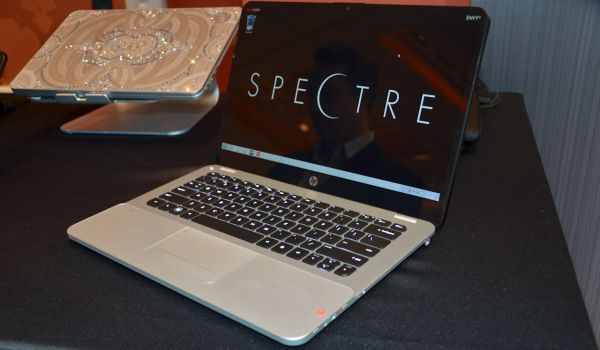
Spec-wise, the Spectre is relatively standard ultrabook fare, though some things do jump out. The 14" 900p Radiance display is notably one of them. It offers good viewing angles and a pretty solid contrast ratio in our eyes-on test, and was shoehorned into the 13" notebook chassis with use of LG's Shuriken technology. Other things include an i5-2467M, 4GB memory, a 128GB SSD (manufacturer and controller as yet unconfirmed since it may change on the way to production), Beats-branded speakers, HP's new wireless audio streaming technology, and full versions of Adobe Photoshop and Premiere Elements. Battery life is quoted at a relatively impressive 9 hours (capacity wasn't disclosed, but I'd bet something similar to the Folio's 59Wh 6-cell).
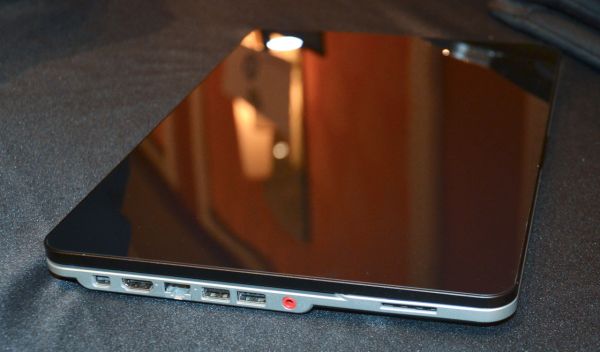
All that glass makes for a pretty fantastic feeling system, something that offers a much premium look and feel compared to the majority of the notebook market, even with respect to the already upmarket ultrabook class. The glass looks quite stunning in person, though the poor lighting conditions made it difficult to capture that effect on camera. As you'd suspect though, it's a bit of a nightmare to keep clean - all of the HP reps had microfiber cloths in hand to wipe the Spectre units down constantly. Other details include keys that are individually backlit, keyboard lighting animations when turning the system on or off, an analog jog wheel for the volume control, built-in NFC (we didn't get to see that functionality in action), and a super-narrow bezel.
At 3.79lbs, the Spectre ends up being relatively heavy by the standards of the ultrabook class. We saw something similar with the Dell Adamo, the last notebook that we saw to use glass so notably in its chassis design. It's an interesting point to note - while the use of a glass casing in smartphones gives handsets a pleasantly weighty feel in hand, extensive use of glass in laptops just makes them feel weighty. Granted, 3.79lbs isn't a whole lot for a notebook, but Samsung just released a new Series 9 ultrabook that weighs in at 2.5lbs for the 13" and 3.3lbs for the 15". In comparison, the Spectre just looks heavy. It's one of the downsides to using a lot of glass, but I think that was a conscious trade off on HP's part.
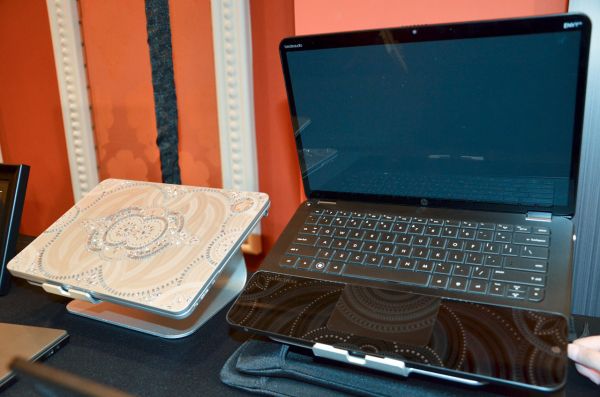
HP also showed off some customized Spectre units designed by Marchesa and Swarovski to highlight the design. Overall, I think the industrial design is substantially cleaned up compared to most of the notebooks we see come out of HP these days, and the attention to detail throughout the design is pretty impressive. The Spectre reminds me a bit of the original Dell Adamo for the cutting edge material and design characteristics, though doesn't have the same level of performance and functionality sacrifices that Dell made with the Adamo, nor the absurdly high price. The $1399 base is a bit on the high side, but still within reason, since that's only a few hundred more than a comparably equipped ultrabook like the 13" Samsung Series 9 or ASUS UX31 retails for.
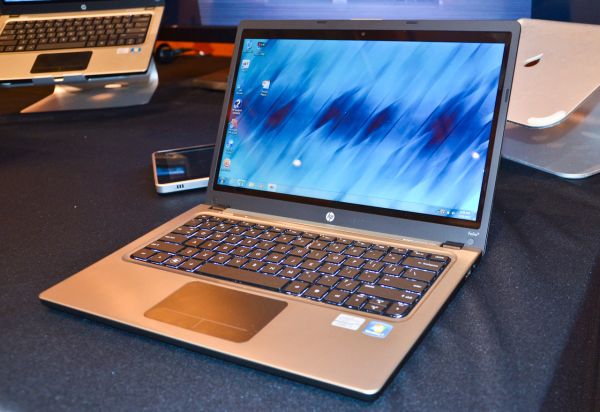
HP also had the Envy 15 and Folio on display, notebooks that have been out for a short while on the market and started shipping very recently. The Folio is HP's first ultrabook, a business oriented model that hits all of Intel's main points for ultrabooks. It has a clean (but somewhat bland) design and is built pretty solidly. It's not a bad machine, and offers very good battery life (9.25 hours on a 59Wh 6 cell), but to my eyes the Folio didn't particularly stand out from the rest of the ultrabook class that has been all the rage at CES this year.
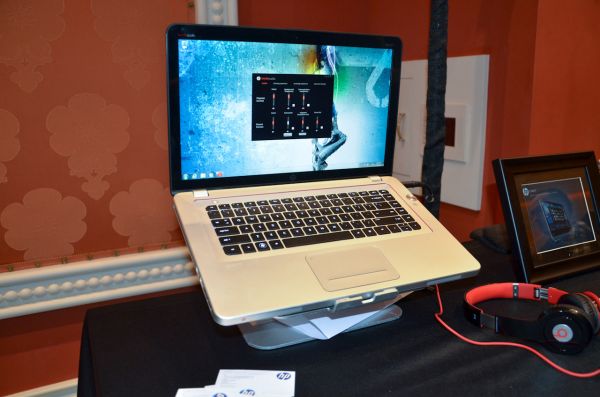
Much more interesting is the Envy 15, which comes with a number of alluring features, starting with the 1080p Radiance display and the Radeon HD 7690M dGPU. It's a pretty powerful computer, one that builds on the success of the older Envy 14. We're eager to get one in our labs to put through the full test suite, and we've been promised an evaluation unit at some point in the near future.
More...
-
01-12-12, 05:35 AM #1448
Anandtech: Dune HD Pro : A Premium Entertainment System using the Sigma Designs SMP89
Dune HD is one of the most respected middleware developers in the media player scene. By exclusively restricting themselves to Sigma Designs, they have managed to produce an enviable lineup of media players coveted by many people. It was not much of a surprise, then, that their latest offering, the Dune HD Pro received a CES innovation award.
When it was announced in late fall last year, the unit was a silver colored monolithic design. In the space of a few months, it has undergone revisions to become more of a modular design.
The unit in the middle is the player housing the main SoC, the SMP8910. It also has all the DACs for full multichannel analog audio output. The module on top is the Blu-ray / HDD add-on, while the third module
is a NAS system with 4 bays and a touchscreen based control unit. Unfortunately, I couldn't play around with the system because the display was running a canned video, and the unit was just showcased without being powered on (at least in the time that I was at the booth).
The main unit comes in at $1900, and I was told by the Dune rep that the rest of the pricing wasn't fully decided yet. At around $2000, it is difficult to justify the purchase of a media player for a majority of the consumers out there. Hopefully, a lower cost version (with just the SoC, couple of USB ports, wired Ethernet, SPDIF optical out and HDMI 1.4a output) will come out soon.
Much has been said about the SMP8910 and its VXP video post processing. I won't go into the details in this piece, but suffice to say that a large number of users are waiting for the SoC to make an appearance in shipping products and believe that only the premium features offered by the SoC can save the local media streamer market from its current rut.
One of the biggest challenges to be faced by the Dune HD Pro (other than consumers accepting their pricing strategy), is the Cinavia DRM system. While I couldn't elicit any official response from the Dune
representatives, I understood that
- Cinavia DRM was included in the latest SDK supplied by Sigma
- The Cinavia behavior with that SDK wasn't the same as that of the PS3.
At CES, Dune also showcased their IPTV platform (Dune HD TV-101/301) which looks very similar in form factor to the WDTV Live SMP and is targeted towards the same market. In the US, the WDTV Live SMP is well placed, and I believe the Dune HD TV series will find its feet in other markets.
Partnerships with THX and Vudu have also been made public. You can read all about that in the official press releases [1 ] and [2]. It is highly possible that one may be able to watch Vudu in HD on the various Dune units (based on the SMP8642) already in the market.
Dune also confirmed that the current lineup (Smart series, HD Duo and HD Max) would remain in production and continue to use the SMP8642. There are no plans to shift to a SMP8646 model unless Sigma Designs decides to completely stop shipping the SMP8642 before the SMP8910 lineup takes off.
There is no firm shipping date set for the HDI Dune Pro, but a large number of media streaming enthusiasts (including me) are waiting in anticipation just to see how good the SMP8910 is!
More...
-
01-12-12, 08:30 AM #1449
Anandtech: Belkin Brings Home Automation, TV and Thunderbolt Solutions to CES
Belkin's product portfolio stretches across a huge range from A/V and networking solutions to iPod and Kindle cases. Their CES both focused primarily on their home electronics products with a layout aping your average small apartment. We took a tour and previewed some products that are ready to ship, and some still in development.
Belkin Thunderbolt Express Dock
This mock-up of their Thunderbolt based dock sat temptingly alone on a desk, awaiting someone with a properly equipped laptop and an array of peripherals to connect. The port selection includes HDMI, GbE, Firewire, 3x USB 2.0, and 3.5 mm audio. Two Thunderbolt ports are present in order to facilitate daisy chaining devices. With a reported 20 Gbps total bandwidth (10 Gbps up, 10 Gbps down) the device will most likely be based on the Eagle Ridge chip. There's a glut of Thunderbolt peripherals at CES, and we're eager to test them out.
Belkin WeMo Home Automation
Several demonstrations were set-up for Belkin's new simplified home automation initiative, including two shipping products. The WeMo Home Control Switch places a WiFi connected switch between the outlet and your small home appliances or lights, allowing you to activate or deactivate them remotely through the iOS-only app. Paired with the switch is an available Motion Sensor that adds additional functionality to the switch. With these early devices, Belkin isn't trying to supplant more advanced home automation systems, simply make it more appealing and more accessible to users.
Belkin's four other demonstrations indicate the direction we can expect the WeMo line to take. A WeMo Door Lock, in collaboration with Kwikset, would allow remote opening of locks, while retaining a keypad and traditional lock. Perfect for the forgetful person that leaves without their keys. (Ed. note: I need this.) A lighting solution was demonstrated with a outlet connected switch providing wireless control of a WiFi equipped light bulb. This particular demonstration is a favorite among home automation providers. Though not available for demonstration, mock-ups of a remote garage door opener and baby monitor were also available. I question the wisdom of having users pull out their iPhones to open their garage doors while driving home, but the baby monitor seems like a sound application for this line-up.
Belkin Room Service Docks

Though most of their tablet peripherals are aimed at the iPad, Belkin did have a rather interesting line of docks targeting the Samsung Galaxy Tab family. Featuring Samsung's proprietary 30-pin connector, 3.5 mm audio out with volume control and power connection, individual docks could be placed in different spaces throughout your home and each trigger a different application from the tablet when it is docked. Their concept might involve triggering a recipe app while docked in the kitchen or a music or reading app when docked in the living room.
Belkin Dyle Mobile TV and ScreenCast
Joining Samsung as a hardware partner with Dyle Mobile, a demonstration of a mobile digital television adapter for the iPad was available. Dyle Mobile TV utilizes spectrum from a consortium of content and broadcast partners to transmit digital television designed for mobile devices. At present the devices require an external antenna, in this demonstration the antenna is formed through a set of headphones connected to the dongle itself. Obviously, this makes for a somewhat inelegant design, but perhaps in the lead-up to release they will find a way to internalize the antenna.
With the ScreenCast TV and AV4, Belkin is trying to bring simplicity and lower cost to place shifting and home theater installations. The ScreenCast TV is their SlingBox competitor, with apps designed for iOS and Android being tested. The device connects via component to your source, say a cable box, and either wired or wirelessly to your network, and then allows you to receive your content stream on your tablet or phone from wherever you have a reliable internet connection. A DVR solution is also being considered which would allow remote scheduling, recording and viewing of content. The product is in the early stages, and the demonstration worked well. Being limited to component, though, means that 1080i and two-channel audio are the best that can expected.
The ScreenCast AV4 is a product closer to production ready, and will appeal to those interested in keeping a clean and tidy TV viewing experience. The product uses two base stations, a transmitter and a receiver. The transmitter can connect to up to four devices via HDMI and transmits the signals over a 5 GHz band to the receiver which is connected to your TV by HDMI. Audio and video are included in the stream (up to 1080p and 5.1 surround), and in an area where the 2.4 GHz is even more crowded than usual, the demonstration had no difficulties.
Belkin N900 Dualband Router
The only new networking product Belkin had on hand was sadly not an 802.11ac device. The dualband N900 does bring specified performance parity to devices from Cisco and Netgear with the ability to transact up to 450 Mbps of data on both the 2.4 GHz and 5 GHz bands simultaneously for a total throughput of 900 Mbps. The 3x3 router includes Belkin's latest QoS implementation, four GbE ports, and 2x USB 2.0 ports for attaching storage or printers. The router won't be released till April and will be expected to retail for less than $200.
Gallery: Belkin Brings Home Automation, TV and Thunderbolt Solutions to CES





More...
-
01-12-12, 09:11 AM #1450
Anandtech: Canonical Brings Ubuntu To Televisions
Canonical, a services and software company that backs open-source projects like Ubuntu, recently announced they would be moving to compete in the Smart TV space. The project, called Ubuntu TV, would be based on Ubuntu Linux and would be open-sourced, though the project is not targeted at DIYers like XBMC, rather it is aimed at manufacturers to integrate within the TV rather than as a set-top box. A lot of questions remained after the initial PR, so we were glad to talk to members of the team on the show floor, here at CES.
The demonstration unit Canonical had on the show floor is very much a mock-up, with limited functionality and mainly serving to demonstrate the UI paradigm. On the left is an array of icons relating to apps contained on the device and arranged vertically. Selecting the app from a remote or keyboard would reveal that apps interface, with the primary demonstration being a content store. A search function would provide either in-app contextual search or universal search depending on which screen you were in.
As a flavor of Ubuntu Linux, the end user would be able to install whatever Linux apps they please; accessing and using them from the TV optimized UI might pose a challenge, though. Custom UIs would obviously be a possibility, and community built applications for Ubuntu TV would be supported. But when we're talking content, a walled garden is always a necessity.
That's where Canonical comes in with their Ubuntu One platform. Unlike their Linux products, Ubuntu One is a closed-source client and server side solution that provides file and content distribution in a managed fashion. Though they didn't go into specifics, they would likely utilize an authorization based approach similar to Verizon FiOS' IPTV on Xbox 360 app. Users would purchase a television with a unique identifier, would register the device from their location with the content provider's service, and whenever they accessed their media, authorization would be verified through Ubuntu One. While the Linux community is not generally one to accept restrictions happily, some DRM is requisite in order to attract content providers and allow the platform to succeed.
We were assured several times, though, that the software platform (separate from the content management component) would be fully-open sourced. And though the Linux platform is capable of running on x86 or ARM-based hardware, Canonical expects shipping products to be based on ARM chipsets and sees optimization of the software on a particular hardware platform as a source of monetization, along with providing the DRM solution.
The Smart TV space is growing rapidly, and like 3D before it, will dominate the television market over the next several years. Unlike, 3D televisions though, the nitty gritty of these latest Smart TVs falls right in our bread and butter, so expect us to spend more time discussing and evaluating these devices as they make it to market.
More...
Thread Information
Users Browsing this Thread
There are currently 9 users browsing this thread. (0 members and 9 guests)








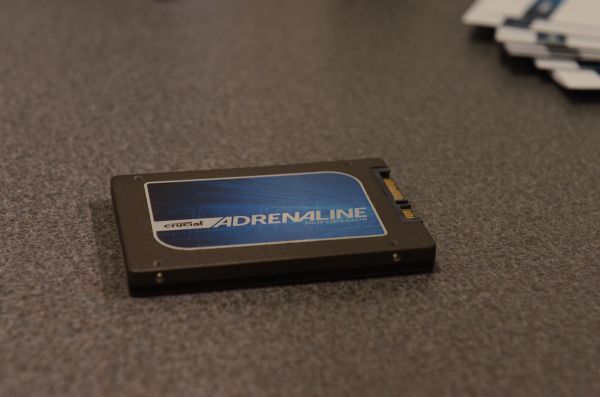

 Quote
Quote

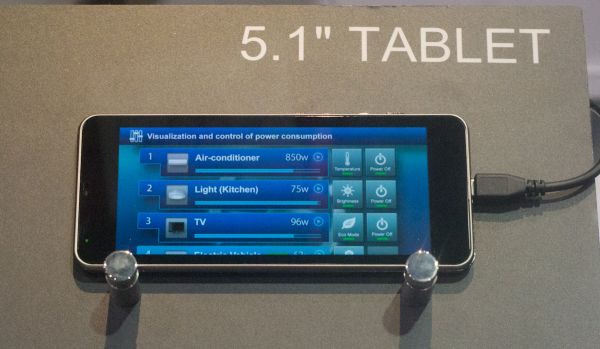
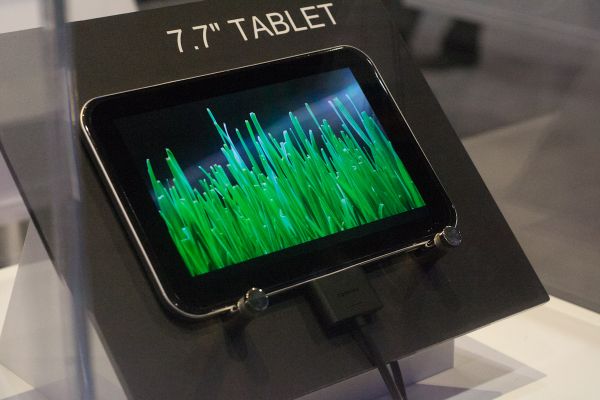
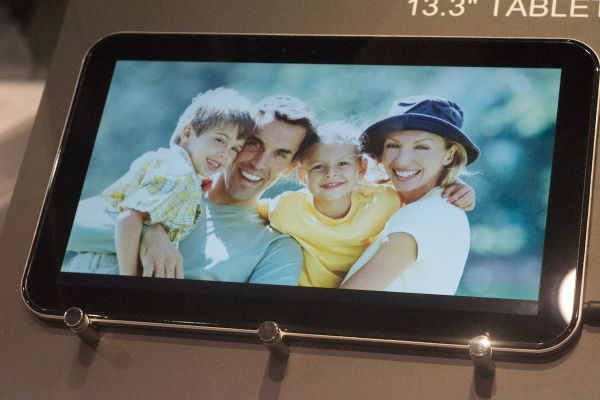




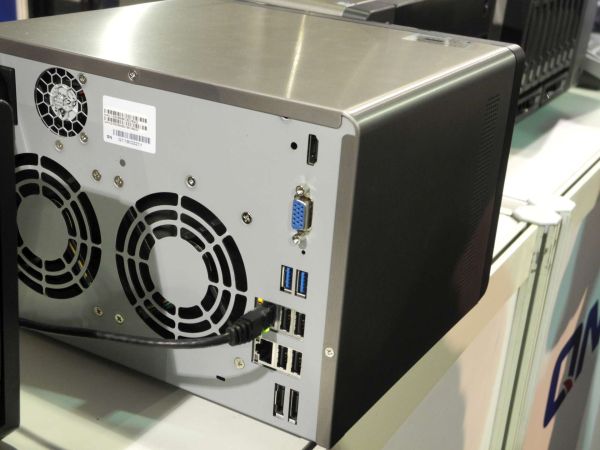
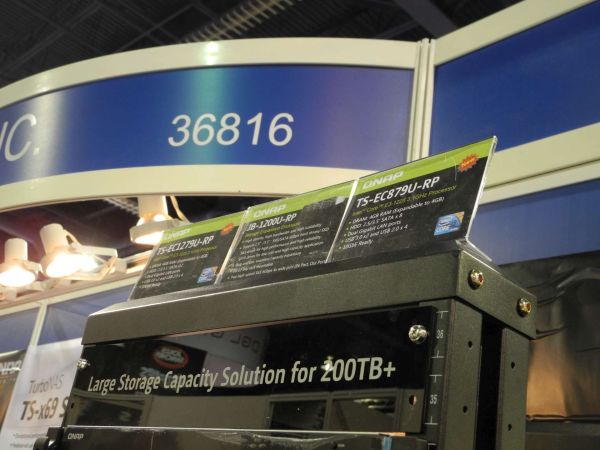
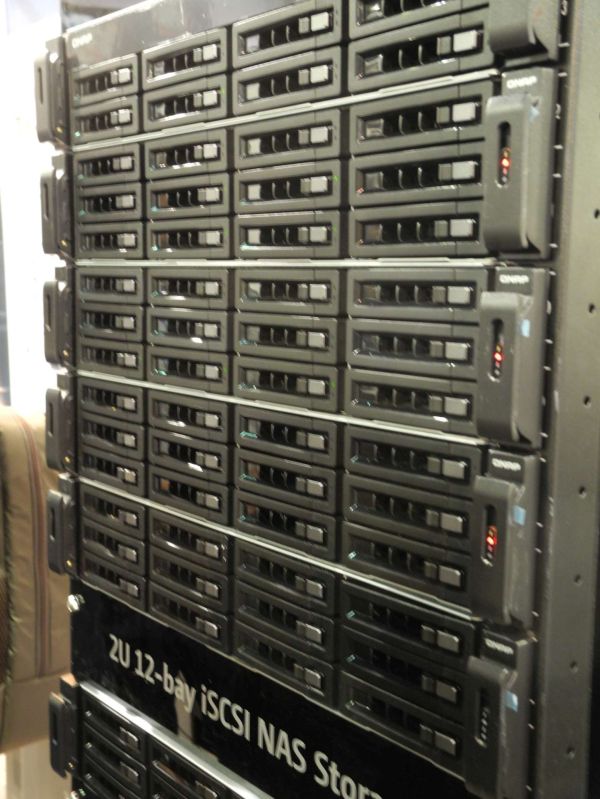

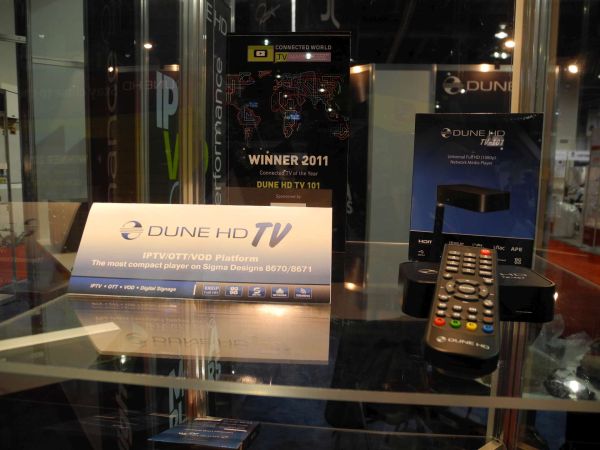

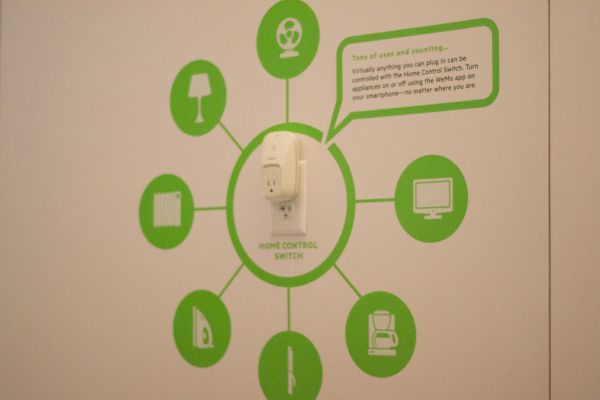
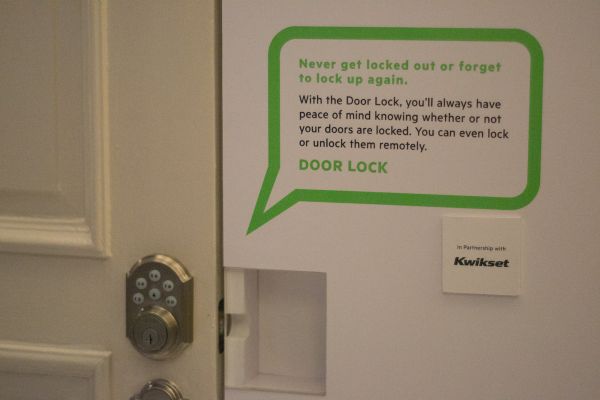
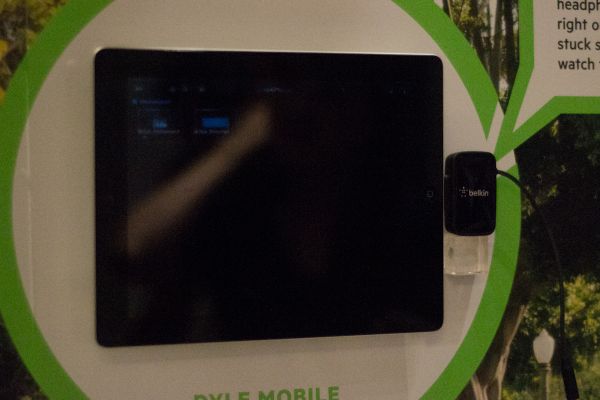
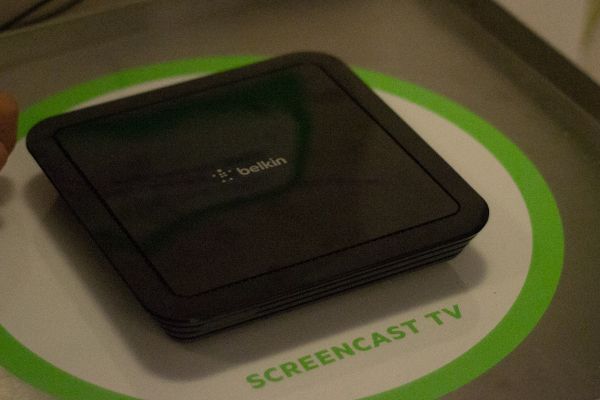
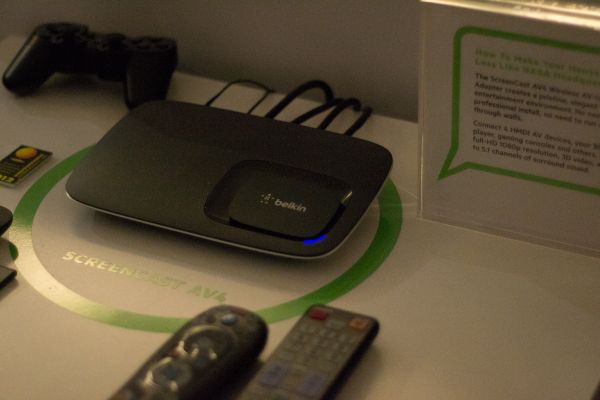
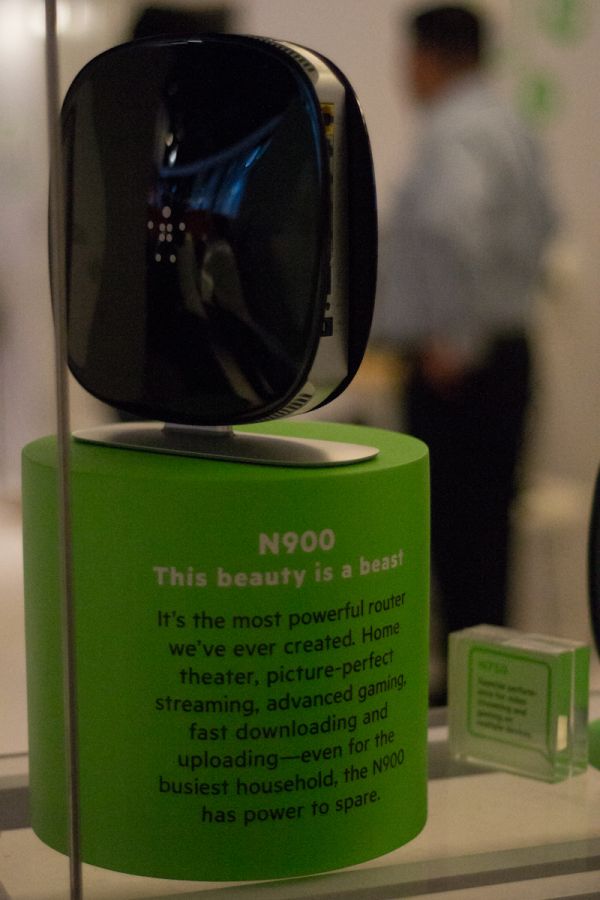
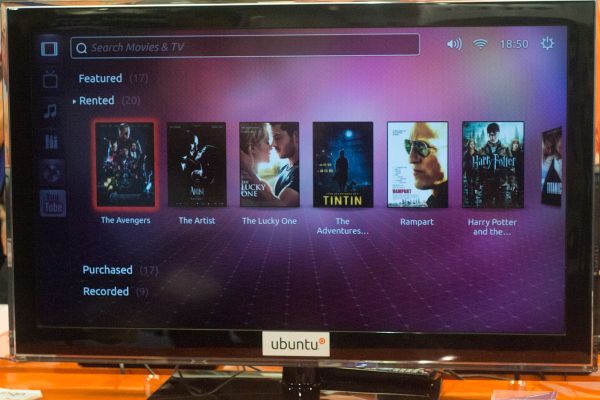
















Bookmarks